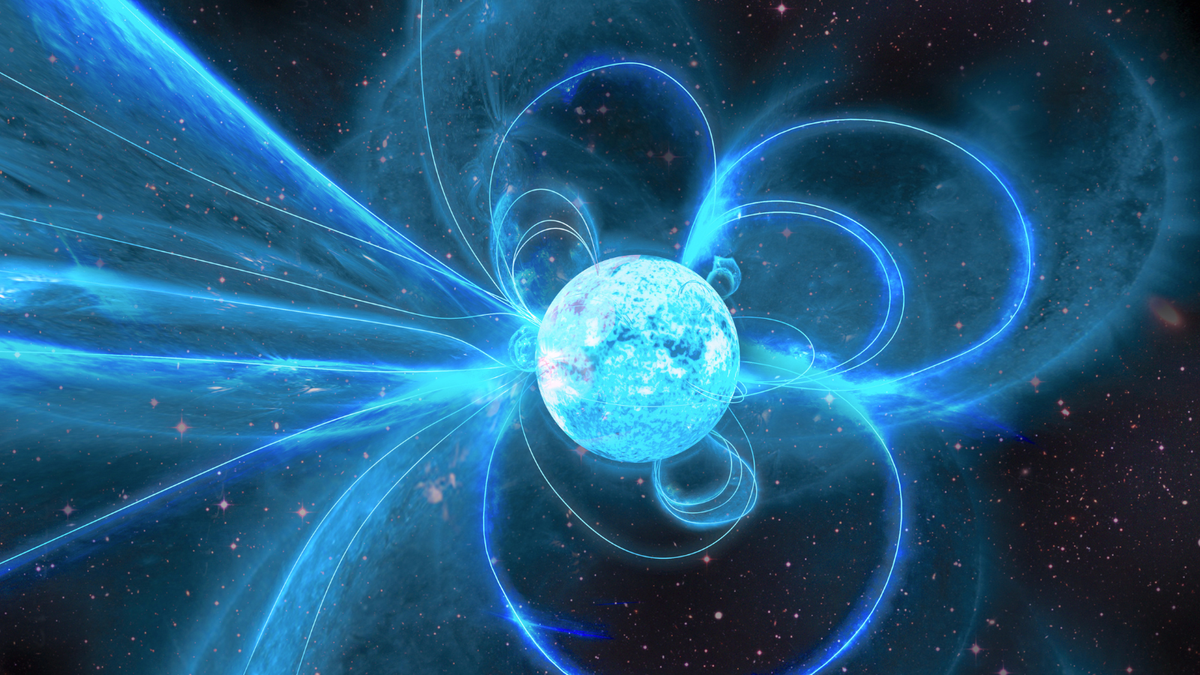The most extreme stars in the universe have recently become even more surprising and enigmatic.
Scientists were shocked by the reawakening of a supposedly “dead” [unnamed magnetar] with one of the strongest magnetic fields ever observed in space. This resurrection of the highly magnetic neutron star defies the current understanding of these exotic cosmic entities.
The team stumbled upon this magnetar’s revival when they detected peculiar radio signals emanating from the nearest known magnetar to Earth, [XTE J1810-197], situated approximately 8,000 light-years away. They utilized the Australian Commonwealth Scientific and Industrial Research Organisation (CSIRO) Parkes radio telescope, named Murriyang, for this discovery.
Typically, magnetars emit light waves that are polarized in a specific direction. However, the team’s findings revealed that the light from this particular magnetar exhibits a unique spiraling pattern as it traverses through space. This unexpected behavior is not only unprecedented but also baffling.
Marcus Lower, the leader of the research team and a scientist at CSIRO, expressed, “Unlike the radio signals we’ve seen from other magnetars, this one is emitting enormous amounts of rapidly changing circular polarization. We have never seen anything like this before.”
Magnetars, similar to all neutron stars, are born from the remnants of massive stars that have met their demise. When these stars deplete their nuclear fuel, the energy supporting them against gravitational collapse dissipates, leading to a cataclysmic supernova explosion.
This explosive event expels the outer layers of the star, resulting in the formation of a neutron star with an incredibly dense composition. The collapsed core intensifies the star’s rotation rate, akin to an ice skater spinning faster by pulling in their arms. Consequently, some newly formed neutron stars can rotate at astonishing speeds.
Moreover, the core collapse causes the magnetic field of the neutron star to intensify immensely. Some neutron stars, known as magnetars, possess magnetic fields billions of times stronger than Earth’s magnetic field.
The recent detection of radio wave emissions from XTE J1810-197 is a rare occurrence, as only a few magnetars have been observed to emit such signals. After a decade of silence, XTE J1810-197 was found emitting radio waves again in 2018 by the University of Manchester’s Lovell telescope at the Jodrell Bank Observatory.
The researchers speculate that a superheated plasma above the magnetar’s magnetic pole could be responsible for the peculiar emissions observed. Further observations with the Murriyang telescope are expected to shed light on various magnetar-related phenomena.
The team’s findings, detailed in a journal publication, provide valuable insights into the enigmatic behavior of magnetars and hold promises for uncovering more mysteries of these extreme cosmic objects.
